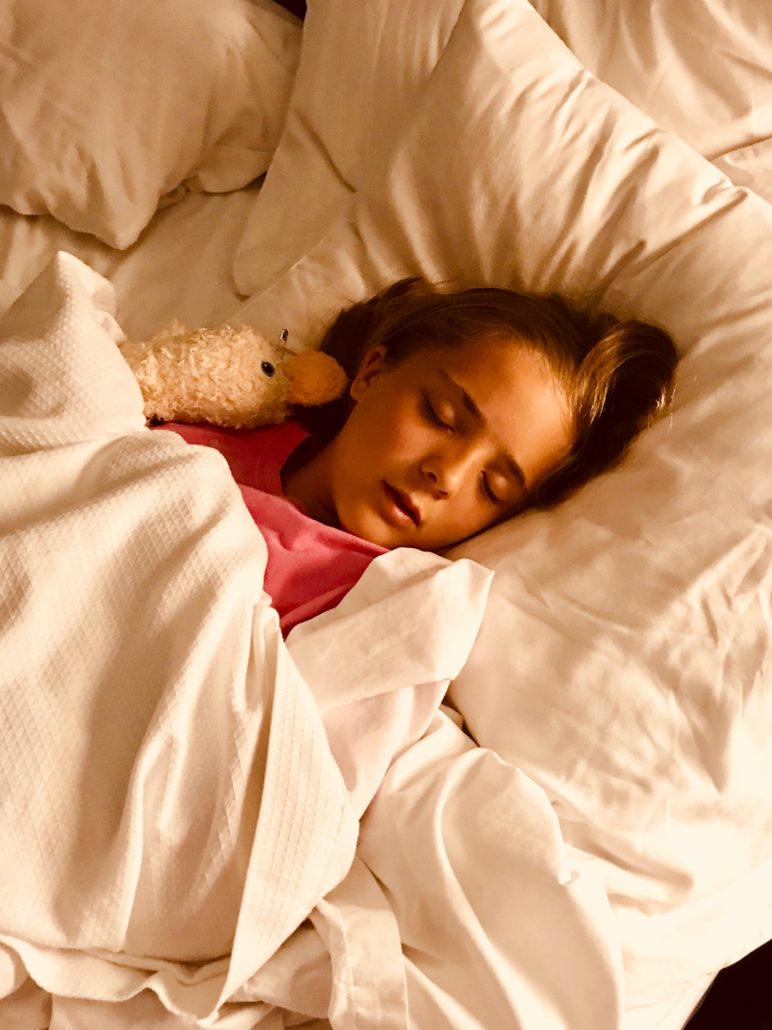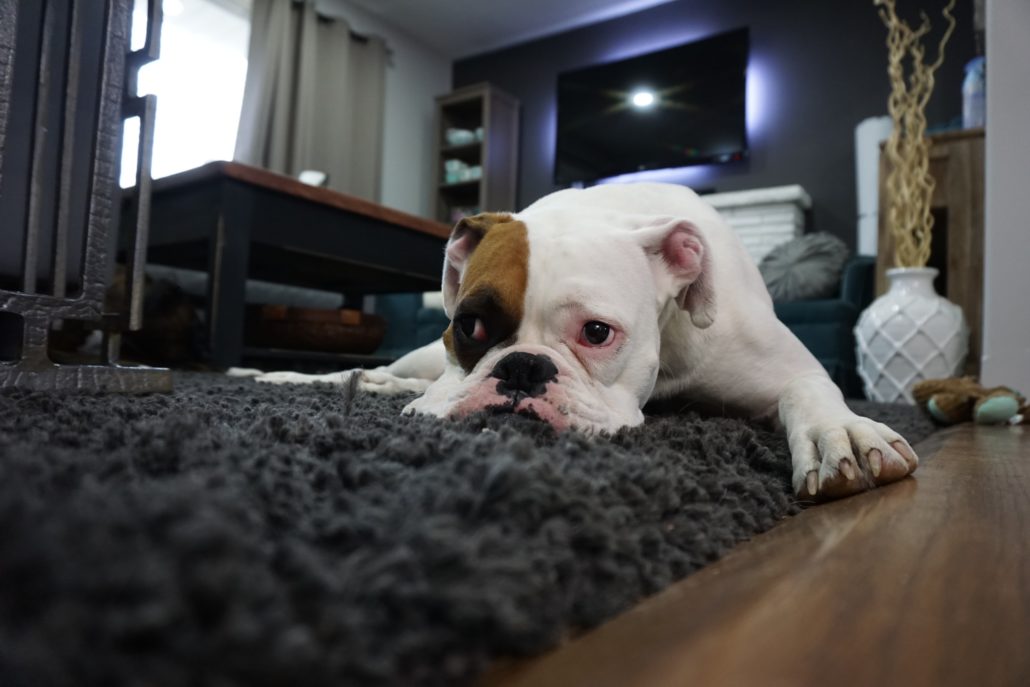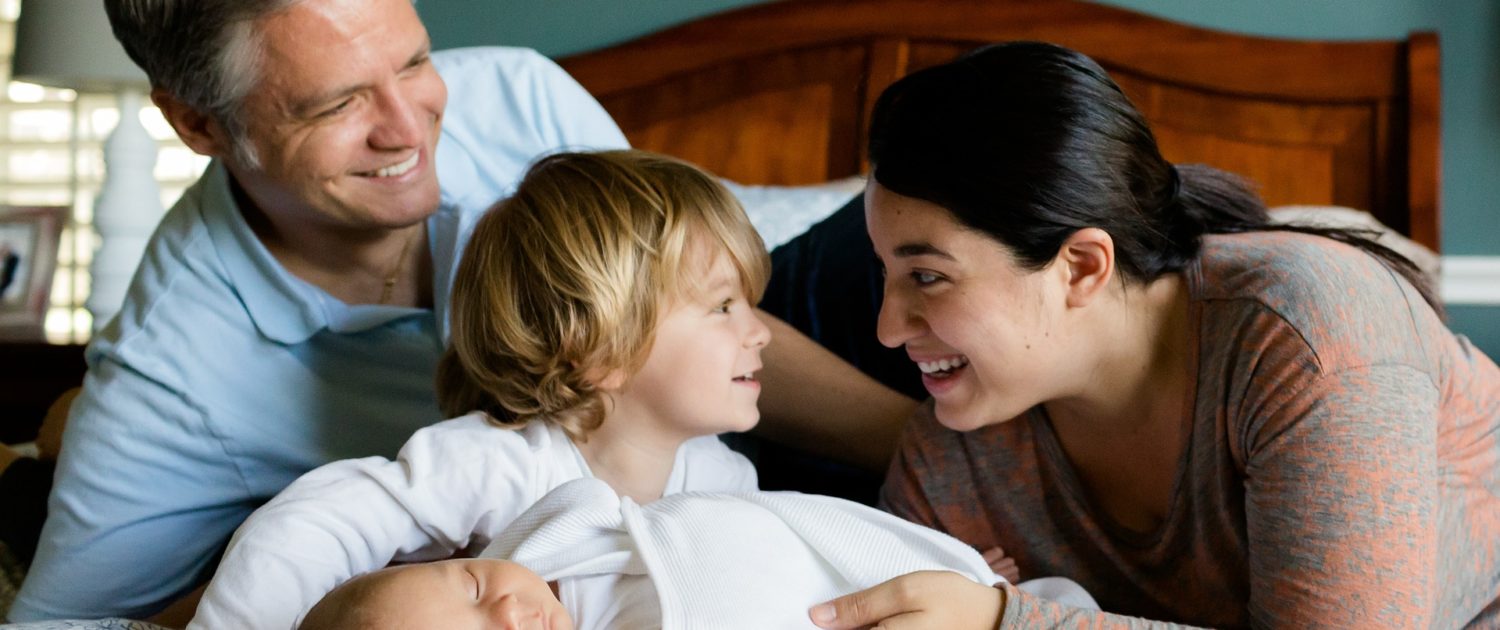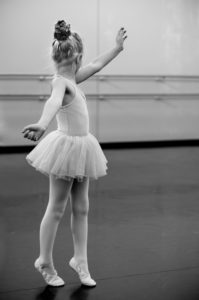

- Call 908 543 4390
- Email
- Dr.Joni Redlich PT,DPT



In a world of cable television, Netflix, and Youtube, it’s easier than ever to find programming for children of all ages. But how much TV is too much TV for kids? In April, the World Health Organization (WHO) released new guidelines for screen time and sedentary behavior for kids under five. The recommendations may have you rethinking a rainy day movie marathon.
Let’s start with the screen time recommendations. For infants and one-year-olds, screen time is not recommended at all. For children ages 2-4, less than one hour per day of screen time is recommended. In fact, WHO recommends that children this young should not be restrained (in a high chair, stroller, booster seat, etc) for more than an hour at a time at all.
So why is all of this important? Childhood, and young childhood specifically, is a time of crucial physical and cognitive development for children. Physical activity and free play allow a baby or toddler to develop strength, balance, and coordination, as well as emerging social skills such as exploring, asking questions about the world around them, and interacting with other kids and taking turns during play. Additionally, getting in the habit of a healthy and physically active lifestyle early in life can prevent childhood obesity and associated health problems later on.
The WHO recommends that babies under one be physically active in a variety of ways several times per day, including at least 30 minutes per day of “tummy time.” For one- and two-year-olds, this increases to 180 minutes of activity of varying intensity spread throughout the day. For three- and four-year olds, at least 180 minutes of active play including at least 60 minutes of moderate or vigorous intensity play is recommended.
So what does all of this mean? Children as young as babies and toddlers need to be busy, active, and curious. Little to no screen time is recommended under age 5, and free play throughout the day and as frequently as possible is recommended. Stuck inside on a rainy day? Read a story book to your baby while she plays on her tummy, rolls, or explores. Create an obstacle course for your toddler including climbing over, under, and around pillows, tables, and toys. Go through the obstacle course with them, and let them problem solve how to get through the course. Read a book, blow bubbles, paint a picture, build a pillow fort, or put on a play. Developing healthy lifestyle habits early in life can help build fine and gross motor skills, and teach children to value healthy habits throughout their childhood and adolescence.

The autism spectrum refers to a set of neurodevelopmental disorders assessed by a scale of social, communication, and behavioral impairments. Children experiencing Autism Spectrum Disorder (ASD) face many challenges, including issues with their sleep which are particularly challenging.
Anywhere from 44 to 83 percent of children with ASD experience some form of significant sleep disturbance. The biggest challenges are falling asleep, staying asleep, sleep quality, and maintaining a consistent sleep routine.
Infants and preschoolers experience the highest rates of sleep disturbance, which can manifest through settling issues, nightmares, confusional arousals, insomnia, sleep apnea, bedtime resistance, sleepwalking, restless leg syndrome, and night terrors.
Why Children with Autism Suffer in Sleep Quality
There are a number of autistic characteristics that contribute to sleep disturbances in small children with ASD, according to several theories:
Theory one is that children with ASD lack discernment with social cues to tell when everyone else in the household is preparing for bed.
Theory two relates to melatonin and an amino acid called tryptophan. Levels of tryptophan, which helps produce melatonin, the ‘sleep hormone,’ can show up in lower and higher levels in children with ASD. Research also shows that melatonin is not released at the same time of day for children with ASD as with children without ASD.
Theory three is that children with ASD have a heightened sensitivity and awareness to external stimuli, meaning that more sounds and other stimuli can keep them up at night or wake them up at night.
Theory four is that anxiety can keep children with ASD up at night, since research shows that children with ASD tend to have higher levels of anxiety.
Theory five is that children with ASD can have neurotransmitter abnormalities in the brain that can cause disruptions in REM sleep.
How to Help Your Child with Autism Sleep Better
Regardless of the reason behind sleep disturbance, sleep deprivation can cause aggression, depression, hyperactivity, increased behavioral problems, irritability, learning deficits, and poor cognitive performance.
The good news is that there is research and advice on what can be done to alleviate symptoms of ASD based on these proposed root causes that contribute to sleep disturbance. See these five tips on what you can do as a parent to help your child get the sleep he or she deserves:
Instill Relaxation Techniques
Based on the anxiety theory, teaching your child how to self-soothe through anxiety-reducing techniques is paramount for quality sleep. If your child suffers from anxiety, some conventional techniques may work like reading a bedtime story or giving him or her a soothing bath. However, if typical remedies don’t work, consider relaxation techniques like deep breathing, muscle relaxation, and music therapy.
Teach your Child How to Sleep Alone
It can be tough but important to train your child how to sleep by him or herself. A child’s being able to self-soothe and fall asleep without a parent lying beside him or her is an independence milestone that gives the parent more freedom at night as well. See sleep guidelines that every parent should know.
Consider Melatonin Treatments
Remember that according to the melatonin theory, melatonin is either not released at the right time of day and/or not enough is produced due to a lack of tryptophan. The use of melatonin supplements is on the rise, but be aware of all the benefits and risks involved before trying melatonin therapy.
Create a Bedtime Routine
It’s important to make bedtime a positive experience, instead of a time of day met with dread. Create a bedtime routine for your child that he or she will look forward to. Take at least 20 minutes prior to bedtime for your child to unwind, where they know in advance it is bedtime. As with any child, regular bedtimes and wake times are key, and consistency with upholding the routine you create is everything. You can even create a picture book where you include visual cues and the sequence involved in your nighttime routine to educate your child and reinforce the bedtime routine.
Minimize External Stimuli
For children with ASD who experience a heightened awareness and sensitivity to external stimuli, it is essential that you minimize household noises and carefully monitor the thermostat to make sure your child’s bedroom remains cool. Also minimize the amount of light exposure to the room, even if that means installing blackout blinds.
Remember that each child, regardless of an ASD diagnosis, develops in his or her own time, where any differences will show up in time. Based on information available through kidpt.com, know when not to worry and when to seek extra help.
Bio: Ashley Little is a writer for the MA Sleep Institute, an organization dedicated to helping others get their best sleep each night.

There’s one word that drives me the craziest when it comes to how adults view a child with a disability and it’s the “L” word!
What is the “L” word???
L-A-Z-Y
I have heard toddlers with low tone, students with developmental coordination disorder and teenagers with muscular dystrophy all called this ONE word.
There’s one thing these kids are NOT…is lazy.
Sometimes these kids can appear lazy to the observer. The child with low tone works really really hard just to fight gravity to stay upright, let alone figure out how to move, listen, look and think all at the same time. The child with developmental coordination disorder is trying to plan, time and sequence each movement that doesn’t come automatically like it comes to you. The teenager with muscular dystrophy has been taught to conserve both energy and muscle function in various ways.
I am a big proponent of pushing kids to work hard to reach their potential, but we have to do that while being mindful of their experience all at the same time. Everyday I work to help children develop their underlying foundational motor control and postural control (think strong root to let that tree grow tall) so that they don’t have to work so hard and can focus on much more important things like PLAYING, LEARNING and having FUN!!!
Don’t let your child be labeled lazy, but do explore therapeutic options to help things become easier and more natural! Schedule a Discovery Visit with one of our therapists today to learn some more insight into your child’s challenges and how we can help!
Spring is here despite the ever-changing weather we have been having! My younger daughter, Sophie, just mastered the 2-wheeler and now ALL she wants to do is ride her bike. So lately we’ve been out bike riding every chance we get (when its not raining, well, even in the rain sometimes!)
We often just get out there and ride while I chase after her or now that she’s really confident, we’ll go opposite directions and meet around the block. What has been awesome is that all the kids in the neighborhood start riding together. What initially was mastery of a new skill, has turned into a big social opportunity.
This is an opportunity that we don’t want any of our kids to miss out on!
I have worked with kids who need various modifications to make biking successful and fun and some kids who simply need the learning process broken down into little bites.
You know that “AHA Moment” when people learn how to ride a bike? That moment is actually when we realize a very specific response to the bike leaning to either side, and guess what? It can be taught! For our kids that need more specific instruction for learning new skills, teaching this directly can take a lot of frustration out of the process for them AND for the parents.
Some great tools for kids to learn are using balance bikes. Kids can learn to glide and practice balancing without needing to pedal. You can also remove pedals from a regular bike to accomplish the same thing!
For kids who have trouble keeping their feet on pedals, velcro straps can help with that piece.
If your child has trouble starting up the bike, practicing on a small hill will let gravity give them a jump start and with more independence than you giving it a push!
Need more help to teach your child to ride a 2-wheeler or 2 find the right adapted bike for them?
Set up a phone call with one of our therapists and let’s come up with a plan for success together. It is never too early or too late to learn! There’s nothing better than that moment of “I’m doing it! I’m doing it!”
Ok, who am I kidding?! Us Moms all worry, but the question is when to worry and then put it aside and when to get some extra help.
Every child develops along their own timeline. It can be challenging to watch your child having a harder time developing their skills compared to other children their age. Sometimes playgroups, park visits, dance classes and soccer games are the first time a difference becomes apparent. Some children will hide their challenges by being super chatty with adults and others may act out with behaviors.
I wanted to share some of our past blog posts that can give you insight into when to give your child more time to develop new skills and when to seek out extra help.

When there are challenges to development, whether it is moving, speaking, or learning, it is important to look at the roots of the tree. Without strong roots, children have to compensate to work at the higher levels up in the tree.
The amazing this is that once we identify missing or weakened roots, we can build them up and the child will spontaneously improve in the skills moving up along the tree!
For babies in their first year, here are some tips of what to look for when it comes to milestones. Have concerns about your child’s ability to look both way or hold their head up straight? Check out our Paren’ts Guide to Torticollis.
There are so many options when it comes to baby equipment and new inventions come out every year. It’s hard for me to keep up now with new baby options now that my kids are older! My advice is to skip most of them though! A blanket on the floor and a good old fashioned play pen are great for baby. Babywearing is also fantastic!
As children get older, many parents will be concerned about w-sitting and flat feet. Check out information on both of these!
As children start school, a common area of concern is a child’s ability to cross midline. This is such an important skill for writing as well as sports skills. Most children who have difficulty crossing midline are given extra practice doing so. Although this advice is well intentioned, it is often missing the source of the problem which I talk about in the Crossing Midline Secret.
Practicing a hard skill can be important, but eliminating the blocks that made it hard in the first place can be an super fast and much less stressful strategy!
If you think your child might need some extra help, check out one of our free reports and see if some of our tips can help you get started right away!
This week I got the flu.
Not fun for anyone, I know. Then I started to feel better, awesome.
But then I started to feel dizzy, crap. Some of you know about my history of vestibular (inner ear) disorders that caused me years of dizziness.
I’ve solved this dizzy problem (yay!), so why was I dizzy? After testing some things on myself (yes, I’m my own physical therapist!) I came to the same conclusion that I have several times before.
My sensory systems got out of sync.
Why? Because I was in bed for several days doing nothing. Watching Netflix doesn’t require much from the vestibular system.
My body had been used to a lazy vestibular system for years (because it wasn’t working right) and so it took in more information from my eyes and somatosensory (touch and body position) system for balance and body awareness. Without being challenged, my sensory systems slid back to old habits.
Many things can cause these kinds of shifts. Since my vestibular system is my weakness, being sedentary can cause a shift. For children, growth spurts can be a bigee to send the sensory systems out of whack. Getting glasses or a change of prescription can change things. An injury, such as a concussion can make a large impact.
For a child who has differences in their sensory or motor systems to begin with, such as a child with cerebral palsy or autism, something seemingly small like a growth spurt can have a powerful impact.
Our bodies are a complex amazing collection of systems that dynamically interact so that we can move, play and learn.
For some, one change can throw the rest of it out of whack, needing time or therapeutic intervention to reorganize. So if you seen a big change in your child’s abilities, there may have been a period of growth or an experience that’s causing the system to reorganize. Perhaps it will also be a window for your child grow even stronger and more resilient than ever.
Please welcome back our guest blogger, Janice Russell, of Parenting Disasters, for a very important topic. As parents, it can be hard to keep up with the changing technologies and how it can affect our children. Here’s a good place to get started.

Cyberbullying can be a scary subject for most parents. While we can understand the emotions behind bullying, it can be difficult to grasp the implications of bullying in today’s modern age, when children are exceptionally vulnerable through their use of technology. Statistics show that only 7 percent of American parents are worried about it, but 33 percent of children have suffered from it. This disparity shows that parents still have a long way to go when it comes to educating themselves on the matter. Here are some things to keep in mind.
How Is Cyberbullying Different Than Regular Bullying?
In many ways, it’s not. It is still a form of intimidation and aggression intended to cause physical or psychological harm. However, the main differences lie in the implications of the technological medium and in the social environment kids live in today.
First of all, the internet allows for some level of anonymity for the bully. It’s also much harder to hide from cyberbullying, as it can happen anytime, and it has the potential to grow virally and spin out of control. There is also the wider context of the internet, which can be a toxic place where hateful messages are spread without fear of repercussion. Most importantly, it can’t realistically be ignored or cut out of the child’s life. A large part of a child’s social life plays out online, and to cut them off completely would be alienating and counterproductive.
What Are Some of the Effects of Cyberbullying?
As with any form of bullying, the effects of cyberbullying are potentially catastrophic. In the short-term, bullying can cause problems with sleep, school, and socialization. In the long run, it can cause PTSD. It can also lead to mental health problems ranging from depression to eating disorders, both immediately and into adulthood.
The worst possible effect of bullying is suicide. This may feel like an extreme example, but the connection has been proven. Teens involved in bullying behavior — on either side — are more likely to consider suicide. This highlights the importance of identifying cyberbullying and intervening as soon as possible.
How Do I Know My Child Is Being Cyberbullied?
First off, make it very clear to your children they should come to you if they are bullied, no matter what. Have an open conversation, in which you impress the importance of both asking for help and treating others with respect on the internet. This guide by Positive Parenting Solutions has some good tips. You also need to watch out for signs of cyberbullying. If you start identifying these, ask the school if they have spotted anything unusual. If not, this may be a sign the bullying is happening online.
What Can I Do?
If you believe the bully is a classmate, your first step should be to take it to the school. However, bear in mind that without direct evidence of the child’s behavior, it can be difficult for the school to enforce any punishment. In the meantime, tell your child not to respond to harassment and save any messages. You may opt to start gathering forensic evidence, such as text messages and social media posts, to begin building a legal case. In severe cases, you may want to turn to professionals like Secure Forensics who can help you gather all the information you need.
If the bullying becomes life-threatening (death threats and suicide encouragement, for example), go straight to the police with the issue. Cyberbullying legislation varies from state to state, so it also helps to be informed about your rights.
It’s easy to feel powerless in the face of cyberbullying, but as parents, it is our job to show our kids they are not powerless. To do that, we need to become comfortable talking about cyberbullying, its real-world consequences, and the options we have to fight it. Cyberbullying is relatively new and uncharted territory for most parents, kids, and schools, so education and open conversation are some of the most powerful tools available to us on the matter.
Small, Tall, Big and Small
From a young age, children are introduced to opposites. From children’s books to playtime, opposites are a fun theme with great vocabulary and concepts. From a developmental perspective, we are showing our kids how to recognize differences in the world and in ourselves.
Our perceptions and the decisions we make are guided by recognizing differences. We can recognize differences in the world when we learn how some things are big and some are small. We recognize an elephant as big and a mouse as small. We recognize a Dad as tall and the child as short. From these concrete and visual opposites we can learn to understand similar differences in our thoughts and feelings. We can feel happy sad, hungry or full, sleepy or energetic and engaged or bored. 

At Kid PT, we often hear from parents that their child is always on the move, always running, or always soooo loud. Often the strategy used to address these concerns, is to practice the opposite. The child is told to slow down and be quieter.
But what if we flip this strategy on its head???
The child who is always on the move may not recognize the difference between moving fast and slow. Asking them to move slower is not something they can truly perceive let alone do, especially on their own when no one is asking them to do it.
Instead, if we try the opposite and ask the child to move FASTER, we’re asking them to recognize a difference that is already within their world of understanding. If we can practice fast-faster-fastest, then the child can begin to recognize the differences of different speeds. Once they do, they can then understand all of the other speeds of slow, medium and fast.
A child that is always moving fast is like a light switch. There is on and off. There’s no such thing as a little on or a little off. It is one or the other. You can’t ask that light to not be so bright.
If we install a dimmer on our light switch, it can now move between bright, not so bright, a little dim and off. Meeting our kids where THEY can recognize differences, like between fast and faster for the always-fast-moving-child, is like installing a dimmer switch. The child can start learning to move that dimmer switch and over time they will be able to recognize all the different speeds that they can move their bodies.
The same goes for the child who is always loud. The main strategy is usually to ask the child to be quieter. What if we try the opposite??? Ask the child to be louder! Then have them use their regular voice (even if it’s loud). Keep playing with the differences that are within the child’s universe. From there, you can build and build. You’ve now installed a dimmer switch that can recognize all different levels of volume and not just one the child has and the level that adults are asking of the child.
This is is just one example of how we can flip therapy on its head and work smarter instead of harder. If we work on a child’s strengths and natural abilities, we can truly change how a child experiences the world. Helping a child change from the inside out can then spontaneously change how they learn and how they move so that they can truly become their best selves!

Welcome Guest Blogger, Emily Graham, of MightMoms.net:

Preparing for a new baby takes a lot of work; in fact, it can be exhausting trying to get the house, your schedule, and your body and mind ready for all the changes a child can bring. There’s so much to think about, and it often takes weeks or even months to make sure everything is taken care of. However, when your new baby arrives and is diagnosed with a disability, your preparations must continue for the safety and well being of your child as well as your own peace of mind.
Whether your child has a physical or developmental disability, there are several things you can do to help him stay safe and comfortable in your home. It’s a good idea to do some research on the types of modifications commonly associated with your child’s specific condition; this way, you can start figuring out a budget for the changes you want to make.
For some great tips on how to get started, read on.
Take Time for Self-Care
Self-care is important, not just prior to the birth of your child, but after, as well. Getting into a routine will help you remember to stop and take deep breaths, even when things get difficult. A new baby who also has a disability is completely new territory, and comes with a long list of things to think about. You may find that you’re so busy being a new parent that taking care of your own needs won’t come easily. Set aside 10 or 15 minutes every day for yourself, whether it’s reading a book or taking a hot shower, and get into that habit.
Prepare Your Home
You’ll want your home to be safe and accessible for your child as he grows, so it’s important to do some research on which changes you can make to create the perfect environment for him. Whether you want to add a wheelchair ramp, widen doorways, or tackle DIY projects like installing a grab bar in the shower, there are many things you can do to get your home ready for an individual with a disability. While some of the bigger projects will be costly and require a contractor, there are many small modifications you can make that won’t break the bank.
Think About Insurance Needs
Many families with a child who has a disability worry about finding insurance coverage since there are many different conditions that require doctor’s visits and hospital stays and surgeries. Depending on your income level, you may qualify for Social Security Insurance for your child; check out this website to learn more. Many parents are often faced with the difficult decision to buy a life insurance policy for their child because they believe they will outlive them. There are many things to think about, so it’s important to do research and find out what your options are.
Start Thinking for the Future
It can be difficult to see into the future; as a parent, you only want the best for your child, but there may come setbacks and hardships that no one thinks to plan for. It’s a good idea to start thinking about what lies ahead, however, and starting with positive things — like where your child will go to school and how your family will help him learn and grow — will help. Look into what your child’s possible needs will be, and do some research on how to fulfill them once he’s ready to go to school. You should also consider whether a service dog, which can be trained to retrieve medication and respond to phone calls, will help your child down the road; look online to see what options are available. Preparing as much as possible now will go a long way toward helping everyone stay happy a few years from now.
Caring for a child who has a disability can be stressful, but with a solid plan, you can feel confident that your little one will have everything he needs to take on any challenge that comes his way. Garner support from friends and family and remember to take care of yourself, too.
Author Bio: Emily Graham is the creator of mightymoms.net. She believes being a mom is one of the hardest jobs around and wanted to create a support system for moms from all walks of life. On her site, she offers a wide range of info tailored for busy moms — from how to reduce stress to creative ways to spend time together as a family.
 Your daughter begged you to sign her up for dance class. She loves to wear tutus and dance around the house to Disney music. You figured dance class would be heaven for her!
Your daughter begged you to sign her up for dance class. She loves to wear tutus and dance around the house to Disney music. You figured dance class would be heaven for her!
The first class goes well. She looooves the teacher and can’t wait to go back. The next few weeks don’t go as well. You watch the class and see that she just can’t keep up with the other kids. She tries and wants to, but just can’t follow along.
Some children will respond by acting SILLY! Others will just refuse to go in to class.
For some children, things will get better over time. These children just need more practice. For other children the coordination, rhythm, motor planning and balance of dance class overwhelms them.
Here are some ideas to help these children have success and get back to the FUN:
Rhythm Play
Motor Planning Activities
Balance Challenges
Coordination Taps
Reach out to a physical therapist for help.
Dance class can be such a fun experience for children! With some extra help, many children will be able to blossom and turn a challenge into a success!
